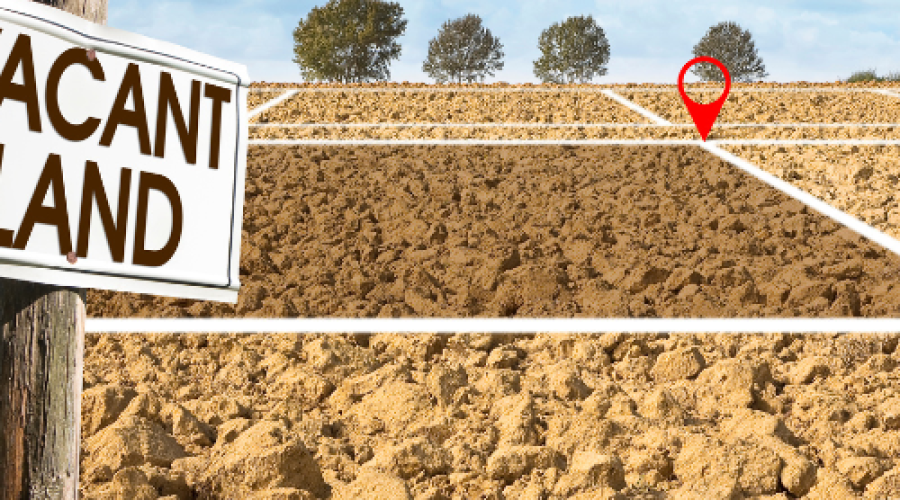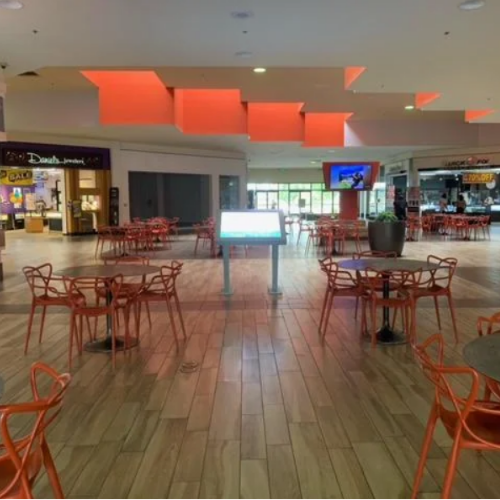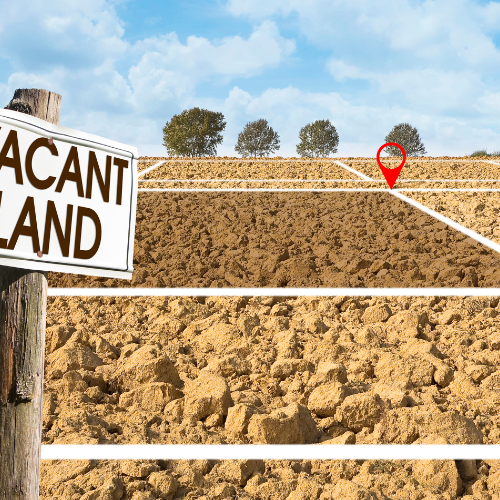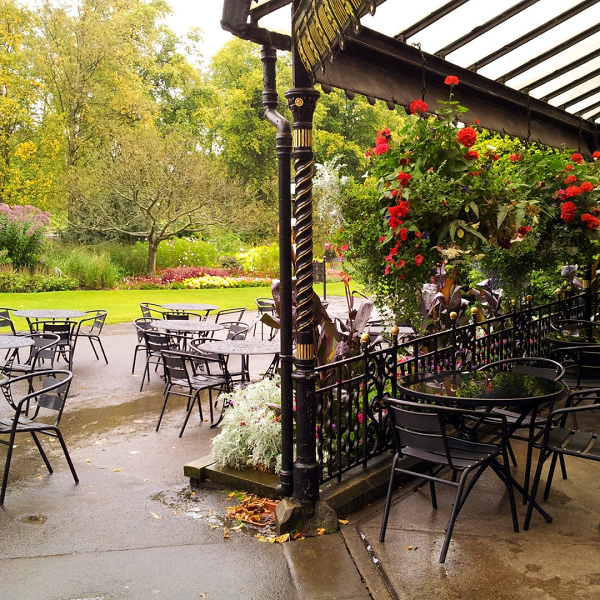Start Your Hemet Business on a Budget: Think Your Vacant Land Is Useless? Here’s Why That’s Just Dumb
Start Your Hemet Business on a Budget
If you own vacant land in Hemet or San Jacinto—whether it’s up in the hills, down a slope, on a busy street next to a major store, or right on your block between residential properties—your land is more valuable than you might think. Even lots zoned for residential use are often approved for more than one residence. You might have land zoned for multiple units, and you’re sitting on potential income without even realizing it.
Many landowners like you don’t know what to do with their land, or you may have big dreams but don’t have the capital to get started. As a result, the land just sits there, unused, maybe with a “For Sale” sign, but agents aren’t actively marketing it.
This is Part 6 of our 6-part series on Start Your Own Hemet Business on a Budget. Read Post 1 Here!
What you may not realize is that there are simple, low-cost ways to start making money from your land right now, while also improving the neighborhood by eliminating vacant lots. This extra income can be the key to eventually developing the land as you originally intended. Whether it’s hosting pop-up events, renting it out for community garden space, or even transforming it into a tiny house village (depending on zoning), you can start making your land work for you—without needing a huge upfront investment.
Disclaimer: This is not legal, real estate, or any other professional advice. We are simply sharing information we learned through our research in Moreno Valley, Perris, Hemet, and San Jacinto areas while looking for ways to invest our money. Do your own research!

3 Affordable Ways to Develop Your Vacant Land in Hemet & San Jacinto Without ‘Developing’ Your Land
If you’re looking for ways to generate income and put your vacant land to use, there are plenty of creative, affordable options that don’t require large-scale development. Instead of waiting to gather the funds for major construction, you can start small, build community engagement, and still see financial returns. These approaches not only help your land start generating revenue but also improve the neighborhood, increase foot traffic, and support local initiatives. Here’s how you can make your vacant land work for you with minimal investment.
1. Low-Cost Launch: Build Hemet’s True Farm-Fresh Market
This concept requires almost no capital investment and offers you the chance to create something truly meaningful for your community. Imagine turning your vacant Hemet or San Jacinto land into a weekend market or pop-up event that focuses solely on fresh, locally farmed, organic products—exactly what your neighbors have been craving.
No more going to local “Farmer’s Markets” only to sift through flea market junk with limited fresh food options in a community surrounded by farmland. Instead, your land becomes the place where locals find high-quality, farm-fresh goods that promote healthier lifestyles.
You have the opportunity to build a community of local growers, bakers, and artisans committed to providing wholesome, sustainable options. Whether it’s organic produce, farm-to-table goods, homemade jams, or freshly baked bread, your market becomes the go-to destination for people who value good, locally sourced food.
But how does this put money in your pocket? Let’s discuss that now.

How You Make Money as a Farmer’s Market
San Jacinto’s Certified Farmers Market runs Thursday 8 AM – 1 PM and Sunday 9 AM – 2 PM, while Hemet’s market operates Saturday 5 PM – 9 PM. That leaves Monday through Wednesday and Fridays wide open for non-competitive markets. Or, if you’d prefer, you can create a competitive edge by hosting a dusk-till-dawn Saturday event, which would resonate well with this community.
You simply designate lot spaces, promote the event, and let your vendors handle their own setups (shelter, power, and lighting). You can even create partnerships with local businesses for vendor support, like tent rentals, generator services, and marketing help.
By doing this, you’re not only making money from your land but also strengthening the local food economy and improving the community’s access to healthy, fresh products. Plus, you’re transforming a vacant lot that may have been an eyesore into a valuable community space.
With time, you’ll generate enough capital to develop the land as you’ve always dreamed. Even better, your farmer’s market will have gained a loyal following, and wherever you take it, your customers will follow this new community staple.
Pros
- Low Start-Up Costs: No major equipment or infrastructure needed—vendors provide their own booths and setups.
- Quick Setup: You can start hosting events almost immediately with minimal preparation and organization.
- Community Engagement: Fosters a sense of community, attracts locals, and promotes healthier food options.
- Improves Property: Keeps your land active, making it more appealing while eliminating the appearance of a neglected or vacant lot.
- Sustainable Growth: Creates a platform for expanding local agricultural or food-related businesses, driving long-term value for your land.
- Flexible Use: Can easily be adjusted to fit different types of markets or events depending on season or demand.
- Income Stream: Vendor fees generate income with little overhead or ongoing costs.
- Verifiable Income: Can be used to help secure funding for developing the land or improving it for a permanent Farmer’s Market.
Cons
- Permit Requirements: You may need to navigate local permits or approvals, which can be time-consuming and require some upfront research.
- Inconsistent Traffic: Foot traffic may fluctuate, especially when starting out or during off-peak seasons.
- Weather Dependency: Outdoor events rely heavily on favorable weather conditions, making rain or extreme temperatures a challenge.
- Vendor Commitment: Initially, you may need to invest time in attracting and retaining reliable vendors who align with your market’s focus on edible goods.
With minimal setup and a strong focus on healthy, locally grown foods, you can transform your vacant land into a thriving hub for the community. By providing a space that celebrates fresh, organic produce and local artisans, you’re not only creating an income stream for yourself but also contributing to the overall well-being of your neighbors.
Disclaimer: Always check local zoning laws and regulations before starting any project on your land.
2. Grow for Good: Create a Hemet Community Garden
This idea involves setting aside small plots of your land for people to grow their own food. It requires minimal investment beyond organizing and assigning plots, building raised beds, adding a water source, carrying liability insurance, and ensuring the area is safe for gardening.
There’s a demand for community garden spaces throughout the San Jacinto Valley. This gives Hemet garden lovers a chance to be involved in sustainable living, even if they can’t grow at home.
As you can see from this Master Gardeners of Orange County Community Garden Startup Guide, half the battle of starting a co-op garden is finding, securing, and funding the land. That puts you ahead of the game already.

7 Ways to Make Money from Your Community Garden
Ready to turn your community garden into a profitable venture while benefiting your neighbors? Here are seven practical ways to generate income from your community garden space, starting with one of the simplest methods: plot rentals.
- Plot Rentals: Charge a small fee for individuals or families to rent garden plots. People will be willing to pay for the opportunity to grow their own organic produce in a safe, well-maintained environment.
- Membership Fees: Offer a membership program where members pay an annual or monthly fee in exchange for access to gardening tools, resources, and workshops. You can also offer priority plot assignments or discounts on plot rentals.
- Sell Produce: Use unclaimed or shared garden plots to grow produce that can be sold at local farmers’ markets or through a subscription-based produce box. This creates a steady income stream from surplus crops.
- Workshops and Classes: Host gardening workshops, sustainability classes, or DIY composting courses for a fee. Partner with local experts to provide education on organic farming, plant care, or eco-friendly landscaping.
- Event Hosting: Rent out the garden space for small events such as garden parties, yoga sessions, or eco-friendly picnics. It’s a great way to use the garden as a peaceful event space while bringing in extra income.
- Compost Sales: Set up a composting system in the garden and sell nutrient-rich compost to members or the local community. This is a sustainable way to generate income while improving the health of the soil.
- Fundraisers and Sponsorships: Partner with local businesses or organizations to sponsor parts of the garden, such as benches, tools, or equipment. You can also hold annual fundraisers or garden-themed events to support your garden’s ongoing maintenance.
These strategies will allow you to turn your community garden into a self-sustaining venture while providing value to the community. Let’s explore the pros and cons of getting started to help you make an informed decision.
Pros
- Low Investment: Beyond some initial setup for garden beds, water access, and insurance, the costs are minimal.
- Community Demand: High demand for community gardens in the area, making it easier to attract interest quickly.
- Sustainable Living: Contributes to a sustainable lifestyle, promoting organic gardening and food security in the community.
- Improves Land: Regular use improves the land’s value and aesthetic, preventing it from being seen as vacant or neglected.
- Improves Soil: Growing on the land improves the native soil more and more over time, making it viable even after development.
- Long-Term Engagement: Gardeners tend to return year after year, creating long-term relationships and steady income.
- Steady Income Stream: You can charge small fees per plot or membership fees for access.
- Verifiable Income: Can be used to help secure funding for improving the land or developing it for other uses.
Cons
- Time-Consuming Setup: Organizing plots, managing gardeners, and ensuring consistent care for the garden takes time and effort.
- Maintenance Costs: Regular upkeep like water systems, garden beds, fencing, and ensuring safety will add to ongoing costs.
- Liability Insurance: You’ll need liability insurance to protect yourself from any accidents or injuries that occur on your property.
- Vandalism Risks: Community gardens can be targets for vandalism or theft, requiring security measures.
- Inconsistent Participation: Some plots may go unused if people lose interest or don’t follow through with maintenance.
By turning your vacant land into a community garden, you provide local residents with the opportunity to grow their own food, fostering a sense of community and sustainability. While it takes some initial time and effort to organize, the long-term benefits include consistent engagement, a steady income stream, and the satisfaction of contributing to a greener, healthier neighborhood.
3. Smart Investment: Develop a Tiny House Haven on Your Land
If your land is zoned appropriately, you could start a tiny house village. This idea requires more upfront investment, as you’ll need to prepare the land with basic utilities (water, electricity, etc.), but the potential return on investment is significant. With many people searching for affordable, sustainable living options, a tiny house village could become a popular choice.
You can charge rent for each tiny house plot, creating a steady, long-term revenue stream. Even if your vacant land is just a regular-sized lot zoned for four residential properties, you can develop a comfortable fourplex tiny house community at a minimal cost compared to traditional housing. This allows you to capitalize on the growing trend of minimalist, eco-friendly living while benefiting financially from owning the land and structures.
8 Types of Tiny Homes for Your Vacant Land
These days, the term “tiny house” is often used as a catch-all for various types of small, compact housing options. Through our research into the overall market, we’ve identified several types of housing in this category.
While these options are widely available in different regions, you must do your own research to determine whether each one is specifically allowed in your city, county, unincorporated area, or HOA.
Here are some common options, all of which can be purchased used to cut costs:
- Tiny Houses on Wheels (THOW): Mobile homes, usually built on trailers, designed for easy transport. Typically, 100 to 400 square feet.
- Park Model Homes: Slightly larger than a traditional tiny house, park models are semi-permanent homes found in RV parks or private land, usually 400 to 500 square feet.
- Modular Homes: Prefabricated homes built in sections at a factory and assembled on-site. Modular homes can vary in size, with many smaller, affordable models ideal for compact living.
- Shipping Container Homes: Built from repurposed shipping containers, these homes can be as small as a single container (about 320 square feet) or larger when multiple containers are combined.
- Prefab Cabins: Factory-built cabins or cottages delivered to the site for quick assembly, often used for vacation homes or rural permanent residences.
- Yurts or Geodesic Domes: Unconventional circular homes, lightweight and portable, often used as semi-permanent housing with basic utilities.
- Earthships or Sustainable Homes: Eco-friendly homes made from natural and recycled materials, often off-grid and designed for self-sufficiency. Earthships require more complex building but provide long-term sustainability.
- Accessory Dwelling Units (ADUs): Also known as “granny flats” or “in-law units,” these secondary units must be built on a lot with an existing single-family home. ADUs cannot stand alone on vacant land but can be affordable rental or guest housing when accompanying a primary residence.
Each option offers varying levels of mobility, cost, and living space, providing flexibility based on zoning and infrastructure needs. Be sure to check local regulations before moving forward with any specific choice.

Affordable Housing Heroes
By creating a tiny house community on your land, you’re not just securing a steady income stream—you’re becoming a hero in addressing the local housing crisis. Your decision to take action, instead of letting your land sit unused, provides a real solution for affordable living in our Hemet and San Jacinto communities. With smart land development choices, like using cost-effective, non-traditional homes, you can offer housing options that truly make a difference.
You’re not only improving your property value but also contributing to the well-being of your neighbors, providing sustainable housing options that help create a thriving community. As you pay down your loan and grow your investment, you’re building a legacy of positive impact. With increased land value and steady income, you’ll be in a stronger position to seek further funding from private investors or financial institutions, helping to further your development dreams while making Hemet a better place for all.
How to Fund Such a Project
By taking the first step to transform your vacant land into a thriving tiny house community, you’re not only solving a pressing local issue but also creating a sustainable and profitable business for yourself. As you build this affordable housing solution, you’ll see the value of your land and your contribution to the community grow. Now that you’ve got the vision, let’s explore how you can fund this exciting project and bring it to life.
Disclaimer: This is not legal, real estate or any other professional advice. We are just sharing information we learned through our research in Moreno Valley, Perris, Hemet and San Jacinto areas while looking for ways to invest our money.
Leverage Your Land Equity
If your land has no mortgage or liens, you can use its equity as collateral to secure financing for the project. In this scenario, your land serves as security, allowing you to obtain a loan for the development. The capital you receive can be invested in a non-traditional home—such as a prefab, tiny house, or modular home—on the property. By renting out that home, you create an income stream that can cover the new mortgage.
Scalable Growth
As you build equity from rental income, you can reinvest in your property by adding more homes over time. Start with one unit, and gradually expand by adding additional homes, creating your very own tiny village. This phased approach keeps you from overextending financially while allowing the land to work for you.
Land Surveys and Development Costs
Most lenders who specialize in financing land and prefab homes offer land surveys, usually for around $500. A survey will provide you with essential details on the costs of making the land habitable—such as installing utilities and preparing a foundation. Knowing these costs upfront will help you plan your budget more accurately.
Smart Investments in Pre-Owned Homes
Start by researching what types of homes are currently popular in your area. You can visit local developments or attend open houses to see what features and styles people are drawn to. However, instead of focusing solely on purchasing brand-new homes, take the time to find used or older homes that you can remodel or renovate. With some creativity and effort, these homes can be transformed into high-quality living spaces with modern upgrades, offering great value to your tenants.
This approach allows you to significantly cut down on upfront costs while still providing desirable housing. By gradually expanding your rental portfolio, you can develop a small, thriving community of homes, all funded through the equity and income you generate. Best of all, you can achieve this with minimal to no debt attached. It’s a smart, scalable way to make the most of your land while building long-term financial success.
Now, let’s discuss both the pros and cons of creating your tiny housing community on your vacant land.
Pros
- Variety of Options: There’s a wide range of tiny home styles available, allowing flexibility in design, cost, and land usage. This gives you more control over how you develop your land.
- Sustainable Living: Many tiny home options promote eco-friendly lifestyles, which could appeal to environmentally conscious tenants or buyers in today’s growing green market.
- Potential for Passive Income: Renting out tiny house plots provides a steady income stream with minimal ongoing maintenance compared to larger-scale properties.
- Affordable Housing Solutions: Tiny homes appeal to a wide range of people seeking affordable, minimalist living, making it easier to market your land for residential use.
- Land Use Flexibility: You can creatively mix different types of small homes on your land, offering a unique community setup that may draw more interest.
- Growing Market Appeal: As tiny homes and alternative living spaces gain popularity, your land becomes more appealing to potential residents who are drawn to this lifestyle.
Cons
- Zoning Restrictions: Not all areas permit tiny homes or certain types of modular or prefab homes, which could limit your options based on local regulations.
- High Initial Setup Costs: While tiny homes are affordable, installing utilities (water, electricity, etc.) on vacant land can be costly upfront.
- Permit Challenges: Securing permits for alternative housing structures like Earthships or yurts may be more difficult depending on local building codes.
- Limited Market for Certain Types: Some tiny home options, like Earthships or yurts, may have niche appeal and could be harder to market to a wide audience.
- Maintenance & Management: Managing a tiny home community, especially if offering multiple housing types, can require significant ongoing effort for upkeep and coordination.
If you’ve been looking for ways to start your own business in Hemet, and you’re sitting on vacant land, it’s time to explore your options. Turning your undeveloped land into a profitable venture is just the beginning. There’s so much more to learn… from marketing strategies to operational automation techniques, staying ahead with the right information is essential to making your business a success.
Post 1: Big Ideas, Small Costs at Hemet Valley Mall
Read the Full Series:
Post 1: Big Ideas, Small Costs at Hemet Valley Mall
Post 2: Hidden Gems of Ramona Bowl Amphitheatre
Post 3: Unlock the Secrets of Hemet with Historical and Science Tours
Post 4: Profit from Adventure at Diamond Valley Lake
Post 5: Creative Coffee, Drinks, and Entertainment ‘At the Park’
Post 6: Think Your Vacant Land Is Useless? Here’s Why That’s Just Dumb!










